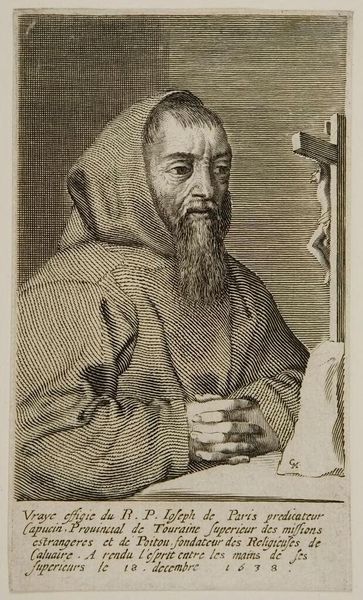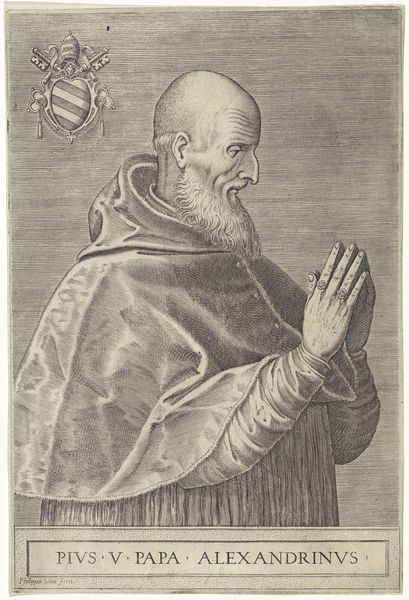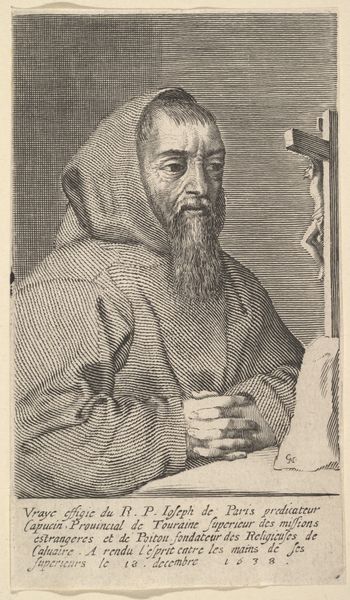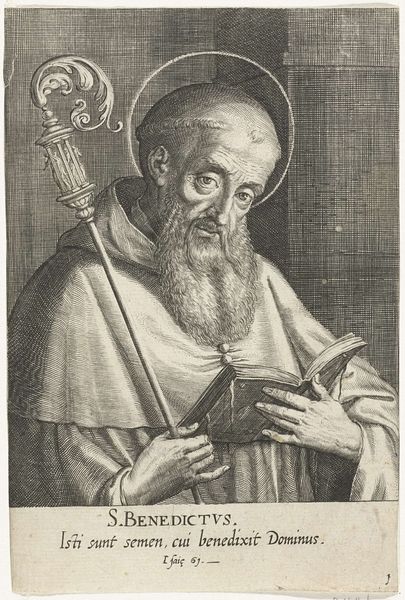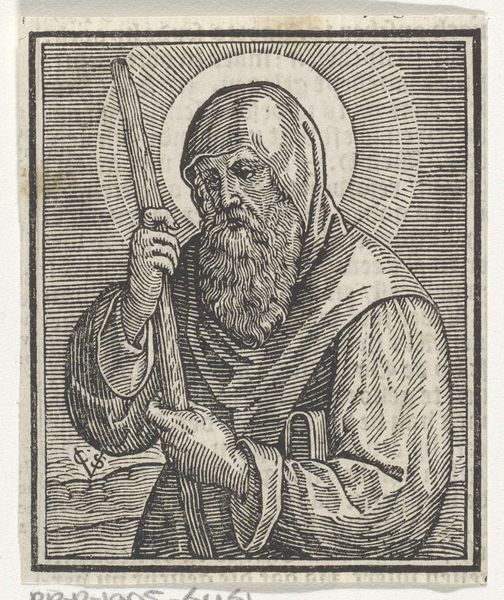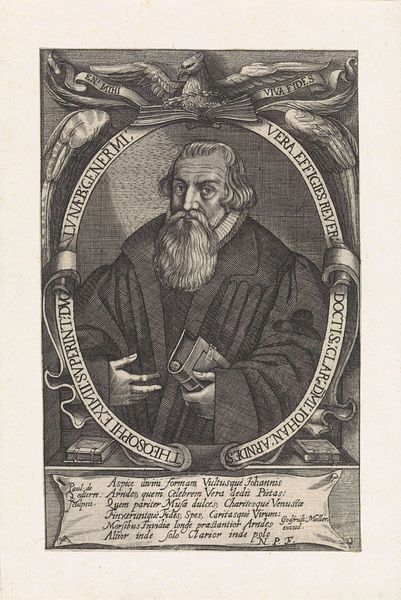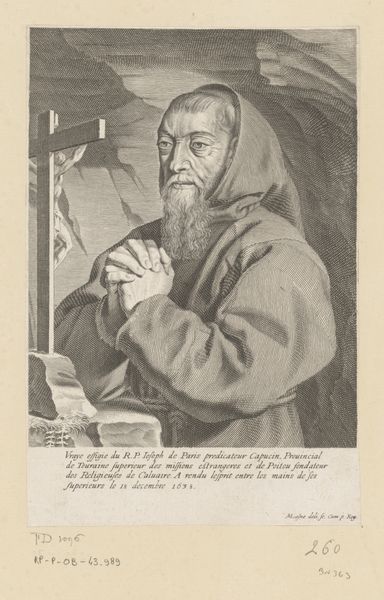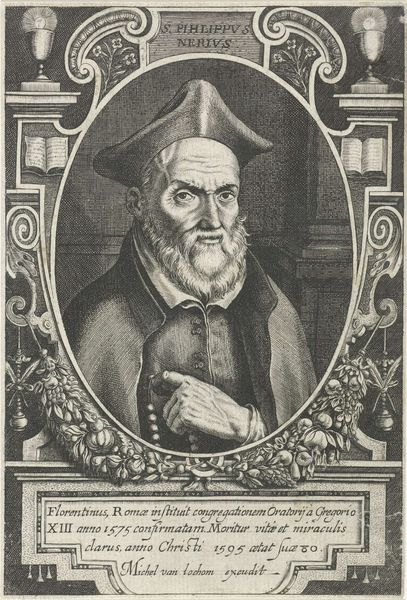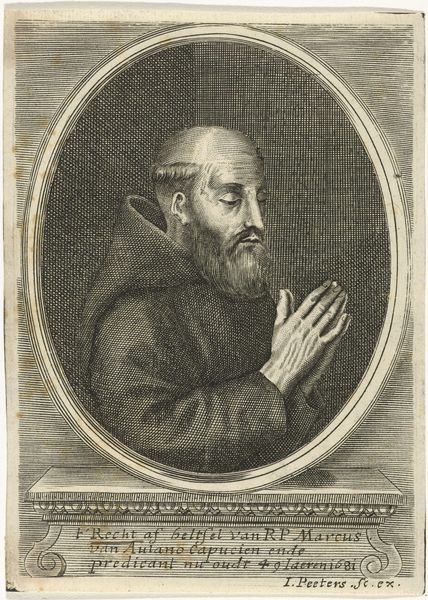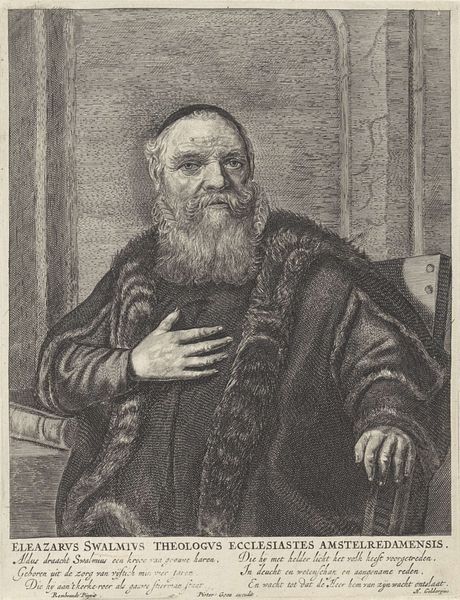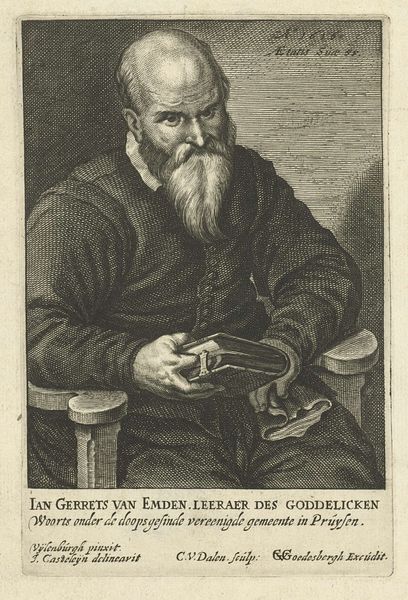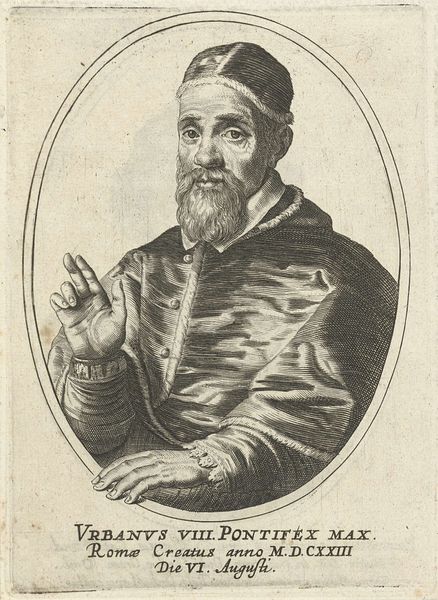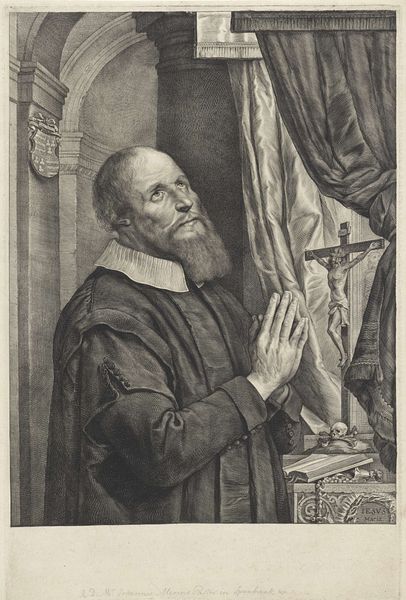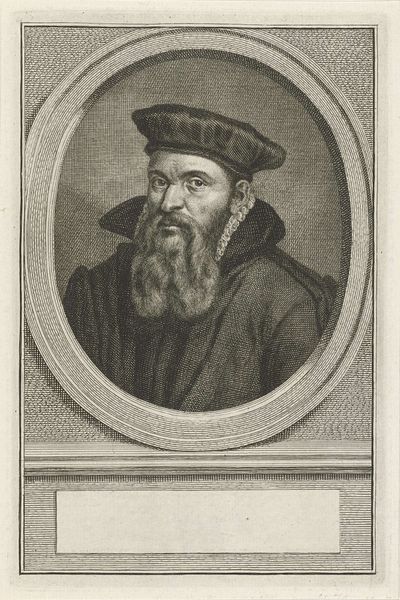
print, engraving
#
portrait
#
baroque
#
portrait image
# print
#
old engraving style
#
charcoal drawing
#
portrait reference
#
portrait drawing
#
engraving
Dimensions: height 168 mm, width 122 mm
Copyright: Rijks Museum: Open Domain
Curator: Oh, this print holds such a unique power. We're looking at "Portret van François Leclerc du Tremblay" by Pieter de Jode II, created sometime between 1628 and 1670. It's housed right here at the Rijksmuseum. Editor: It's strikingly austere, isn't it? All those meticulously etched lines conveying a sense of deep contemplation. It’s almost as if you can hear the silence radiating from the figure. Curator: Absolutely. Jode's skill really shines. Consider the social context—engravings like this were essentially the mass media of the time, allowing for the widespread dissemination of images and ideas. Think of the labour involved, carefully cutting into a metal plate to create these delicate lines. Editor: It's interesting to consider the accessibility of these portraits back then, the ways in which they flattened power by bringing elites to the masses...but at a cost to those actually making the artworks. Was that access revolutionary, or were printmakers just cogs in a new kind of power? Curator: A valid question! On another note, François Leclerc du Tremblay, or Father Joseph as he was known, was a rather intriguing figure, a Capuchin friar and confidant to Cardinal Richelieu. Editor: You can feel that intensity just in the pose, clasped hands hinting at either deep prayer or barely suppressed political machinations. It’s amazing that such small, subtle manipulations of line can convey that psychological complexity. Curator: And the framing! The window motif creates a sense of both enclosure and a glimpse into something beyond – the divine, perhaps? Or is it just the bars that define and confine him? Editor: Thinking of its materials, it reminds me that printed imagery helped fuel things like exploration, but also colonial exploitation. I feel like I should hate all this cross hatching, but that attention to detail almost makes up for some historical injustices, almost! Curator: Ah, the perennial dance between beauty and history. Always informing the way we see each detail. Editor: In any case, spending some time considering the conditions behind its production deepens my appreciation for this somewhat unsettling and very intriguing work.
Comments
No comments
Be the first to comment and join the conversation on the ultimate creative platform.
